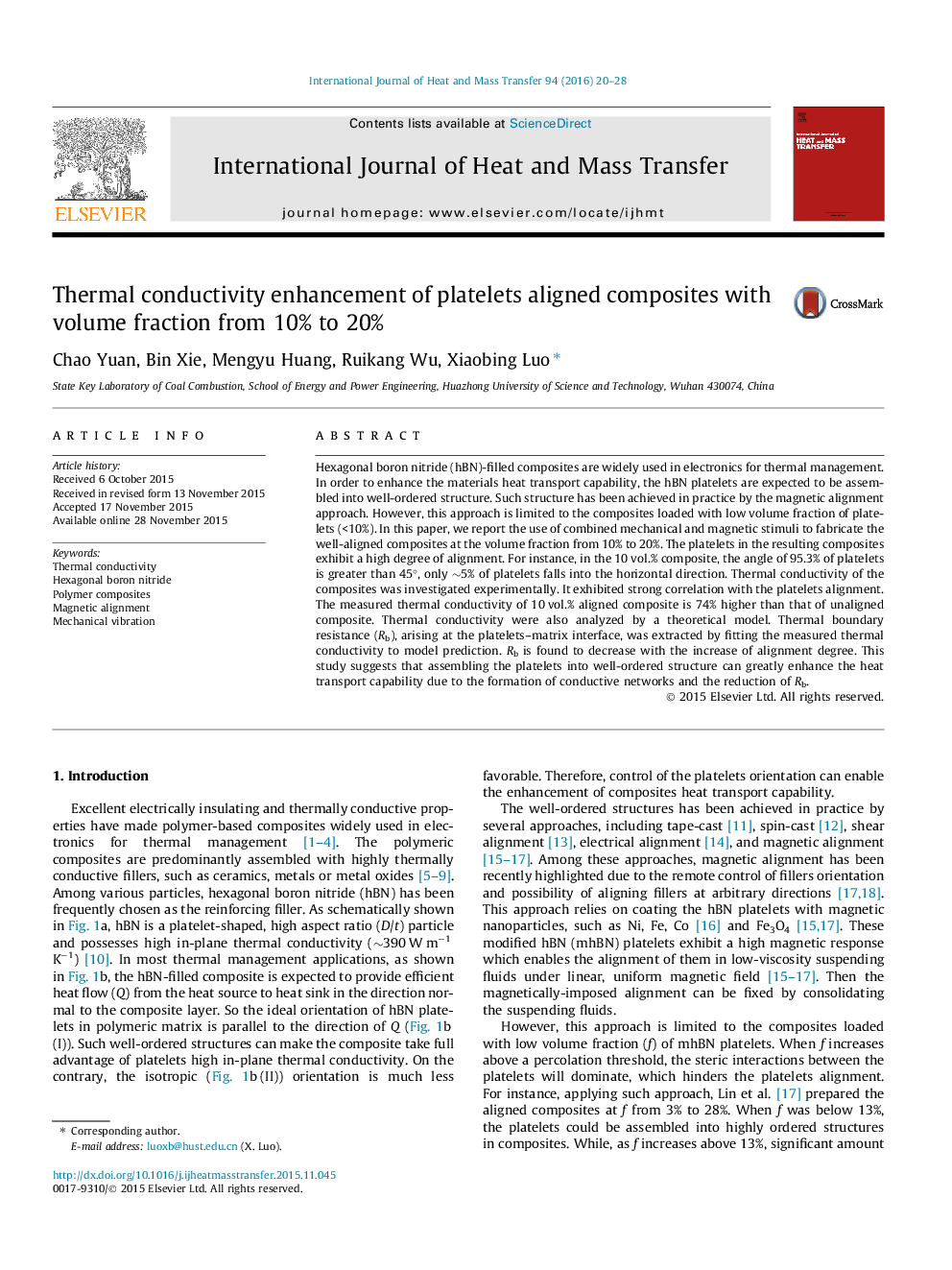| Article ID | Journal | Published Year | Pages | File Type |
|---|---|---|---|---|
| 7055895 | International Journal of Heat and Mass Transfer | 2016 | 9 Pages |
Abstract
Hexagonal boron nitride (hBN)-filled composites are widely used in electronics for thermal management. In order to enhance the materials heat transport capability, the hBN platelets are expected to be assembled into well-ordered structure. Such structure has been achieved in practice by the magnetic alignment approach. However, this approach is limited to the composites loaded with low volume fraction of platelets (<10%). In this paper, we report the use of combined mechanical and magnetic stimuli to fabricate the well-aligned composites at the volume fraction from 10% to 20%. The platelets in the resulting composites exhibit a high degree of alignment. For instance, in the 10 vol.% composite, the angle of 95.3% of platelets is greater than 45°, only â¼5% of platelets falls into the horizontal direction. Thermal conductivity of the composites was investigated experimentally. It exhibited strong correlation with the platelets alignment. The measured thermal conductivity of 10 vol.% aligned composite is 74% higher than that of unaligned composite. Thermal conductivity were also analyzed by a theoretical model. Thermal boundary resistance (Rb), arising at the platelets-matrix interface, was extracted by fitting the measured thermal conductivity to model prediction. Rb is found to decrease with the increase of alignment degree. This study suggests that assembling the platelets into well-ordered structure can greatly enhance the heat transport capability due to the formation of conductive networks and the reduction of Rb.
Keywords
Related Topics
Physical Sciences and Engineering
Chemical Engineering
Fluid Flow and Transfer Processes
Authors
Chao Yuan, Bin Xie, Mengyu Huang, Ruikang Wu, Xiaobing Luo,
